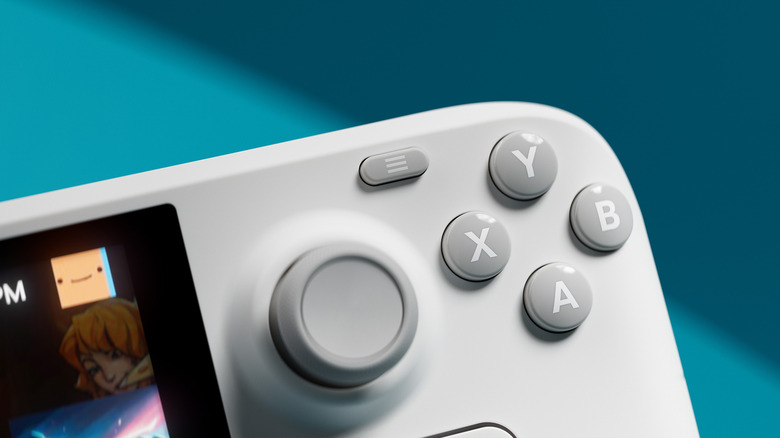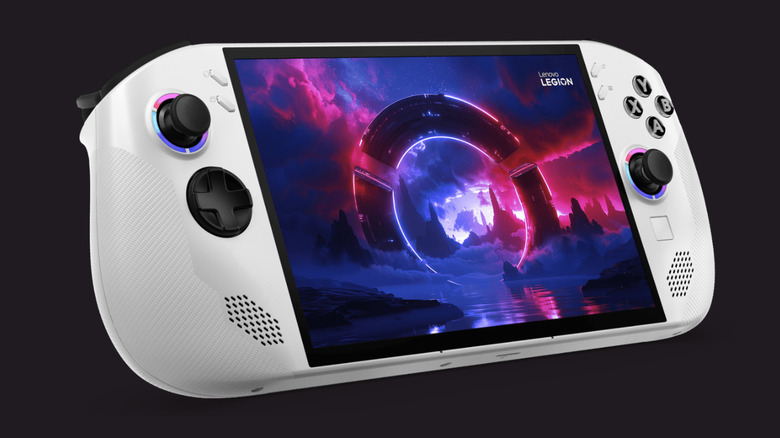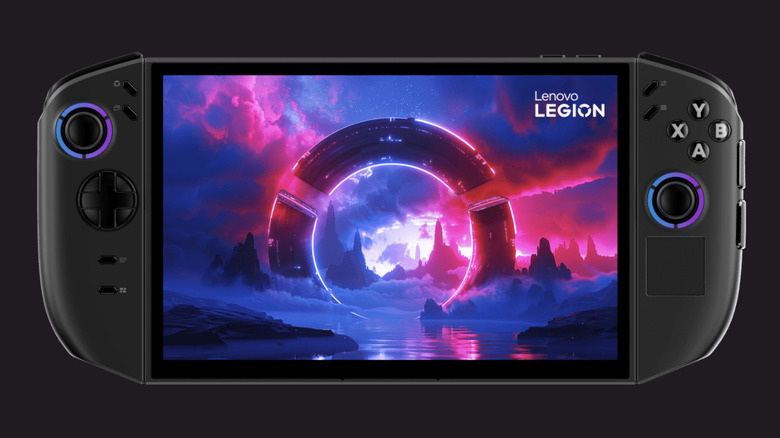Steam Deck Vs. Lenovo Legion Go S With SteamOS: Which Offers Better Gaming Performance?
When the Steam Deck dropped in 2022, it turned PC gaming from something exclusively done at home into something portable. Since then, a range of other handheld gaming PCs have emerged. Lenovo is one of Valve's rivals in that regard, and the 2025 Legion Go S is an alternative to the Steam Deck — but which one is better?
Now that the market offers a wide range of options to choose from, it can be tricky to figure out which handheld best suits your needs. The best way is to break down the specs and then compare benchmarks from different reviews. Things get trickier due to the immediate similarities shared by the Steam Deck and the Lenovo Legion Go S. Besides the fact that they're both handheld gaming devices, they can also both run on SteamOS, although it's native to the Steam Deck. They also come in similar sizes and offer comparable amounts of storage.
Despite that, the Steam Deck has been kicking around for a few years now; even the OLED model is now a couple of years old. Consequently, the newer Legion Go S can outperform the Steam Deck in a few key ways. For example, the Lenovo handheld offers a larger, higher-resolution screen with a much higher possible and variable refresh rate. It also sports a better processor, more random access memory (RAM), and a longer battery life.
The Lenovo Legion Go S with SteamOS generally delivers more frames per second
A key difference in the handhelds' performance lies in their processors. The Legion Go S is equipped with an AMD Ryzen Z1 Extreme processor, a powerful central processing unit (CPU) with eight cores and 16 threads, as well as a clock speed of up to 5.1 GHz. Meanwhile, both the LCD and OLED models of the Steam Deck use the older, custom Zen 2 Van Gogh processor, with four cores and eight threads, and clock speeds ranging from 2.4 to 3.5 GHz.
PCMag put the Steam Deck OLED and the Legion Go S head-to-head by testing their performance with a handful of different games, including the resource-intensive "Cyberpunk 2077." The SteamOS-powered Lenovo Legion Go S substantially outperformed the Steam Deck OLED in terms of frame rates. The Legion Go S was hitting 51 frames per second (fps), beating the Steam Deck OLED by 19 fps. Similar differences were found when running "Shadow of the Tomb Raider" at low settings, with Lenovo's handheld reaching 60 fps while the Steam Deck hit 44 fps.
The same findings aren't replicated across all testing environments, though. Tom's Hardware also tested the devices using the same games, and the difference between the two was less drastic, but the Legion Go S with the less powerful Z2 Go chip was used here. When testing the Lenovo handheld at 1200p in "Cyberpunk 2077," the fps capped out at 35, and the Steam Deck OLED showed nearly identical results; its LCD counterpart hit 36.9 fps. It's tough to hit certain benchmarks with more demanding software or when playing at full resolution, so the amount of frames you're getting can vary massively.
Legion Go S offers twice the amount of RAM as the Steam Deck, opening up more gaming options
RAM affects how fast your computer is, and your handhelds are no exception. The Legion Go S with the Z1 Go Chip offers 32 GB of RAM, while the Steam Deck only offers 16 GB. That extra memory can help the Legion Go S run high-performance games more smoothly.
As well as RAM, there's also video RAM (VRAM) to worry about. VRAM is short-term memory storage that plays a vital role in making sure the graphic elements of a game run smoothly and quickly, particularly when processes like ray tracing (RT) or upscaling using frame generation are happening. Modern, higher-spec games can rely on VRAM massively, so having some available is important for optimal gaming performance.
Gaming handhelds generally don't have VRAM in the same way that a discrete graphics card does. Instead, they have unified RAM, which lets you decide how much system memory you're willing to use for graphics-related tasks. This means that packing more RAM is particularly helpful, as it lowers the chance of running into memory bottlenecks. Since Steam Decks only offer 16 GB of RAM, the Legion Go S outperforms it in that regard.


